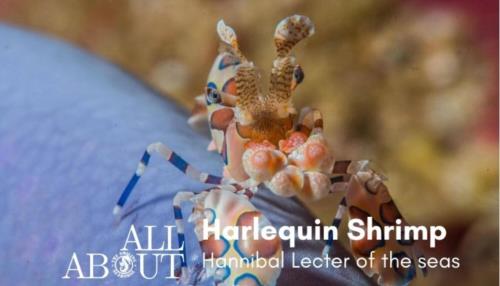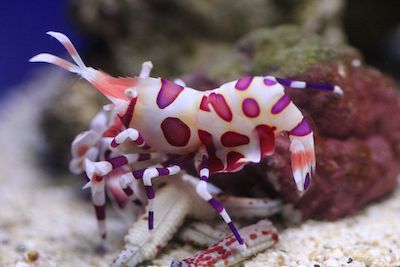
Coral reefs are rich, biodiverse ecosystems that are home to incredible creatures of all shapes and sizes. Scuba divers from all over the world flock to remote locations like the Mergui Archipelago in Burma, to have the chance to catch a glimpse of marine curiosities from massive manta rays to tiny nudibranchs scattered across underwater landscapes that will take your breath away. If you are the kind of person who is enthralled by macro life, you have surely heard of the harlequin shrimp...
Also called Hymenocera Elegant, the Harlequin Shrimp is a minuscule flamboyant crustacean that is among the superstars of its family. Its hypnotic coloration and bizarre behavior are some of the reasons that this rarity is high on the list of Macro-life Under Water photographers.
(read the full Underwater guide to diving Myanmar)
Harlequin shrimp can be identified by some distinctive features such as the unique body shape and appendages. Their claws are large and flat, different from all other types of shrimp. Their tail is trapezoidal and they use two fancy flat antennae on their heads with sophisticated scent receptors tuned to detect prey.
How big do harlequin shrimp get
The females can grow up to 5cm in length whereas the males, even fully gown, looks like a juveniles next to them.
One of the Harlequin Shrimps most attractive feature is their Carnaval-ready costume. Their carapace is cream-colored patterned with large psychedelic spots.
It used to be thought that there were two varieties of harlequin shrimp (Hymenocera elegant and H. Picta) but it was later concluded that they are one and the same with variations in color depending on the region they inhabit.
Around the Indian Ocean (H. Elegant), they generally have orange to purple spots surrounded by a blue line.
While Harlequin shrimp native to the pacific, particularly from Hawaii (H. Picta), are the most vibrant with spots that are rather pink or purple detailed with a yellow lining.

Can harlequin shrimp change color?
Some aquarium owners have reported that Harlequin shrimp can change color base on their mood and as an example, one ordered a pair one picta, and one elegant, both arrived looking identical in color until they both calmed down and returned to their true colors!
These intricate motifs have developed through evolution as a means of protection. In the underwater world, animals with bright colors are usually recognized by potential predators as toxic. This is true for the harlequin shrimp whose advantage invites far fewer natural predators than other less colored creatures of similar stature.
They are often found in pairs and if a couple successfully establishes a secure den they can be found in the same place together for long periods of time. Sometimes Harlequin Shrimps will even spend the vast majority of their 7-year lifespan in the same place and with the same mate. They will live, breed, hunt, and defend their territory together loyally as long as their surroundings allow them. You may be thinking this is a very romantic gesture on the part of these gorgeous couples. Sorry to burst your bubble, but this behavior might just be a good way to increase their chances for the female’s eggs to get fertilized...
What do harlequin shrimp eat?
Harlequin shrimp have very unique dinning habits that could easily be inspiring for the plot of a horror movie. Although they are very small, they survive on a diet of almost exclusively live starfish much bigger then themselves. With a particular taste for their legs and soft tissues (best eaten with a nice chianti). Most seas tars species are suitable but reportedly Harlequin shrimp cannot eat brittle stars.
How do harlequin shrimp kill startfish?
The mating pair will hunt together, sharing the tasks at hand. They will first have to track down their prey using their sensitive antennae. Males, although much smaller, have been known to be more agile and proficient with this hunt than the females. Once the starfish is caught, the pair of harlequin shrimp will work as a team to flip the starfish over and then drag it back to their den using their powerful pincers. Unable to move, the starfish’s tube-like feet are exposed for its captors to feast on while it’s still alive.
Harlequin shrimps are in danger
H. picta
Like many other marine creatures, harlequin shrimp are suffering due to the intervention of humans in their environment. Global warming, pollution, coral bleaching events, changes to water chemistry, and fishing to name a few, are factors that threaten this gorgeous species.
The deterioration of coral reefs could have a devastating impact on this species as they will not have the protection to help them develop and thrive. Also with fewer corals come fewer starfish for harlequin shrimp to eat, and thus begins a vicious cycle of doom. Although there are no specific conservation initiatives targeting harlequin shrimp, coral conservation projects can indirectly benefit individuals living on a reef that is well cared for...
READ MORE ABOUT IT ON OUR BLOGSPOT